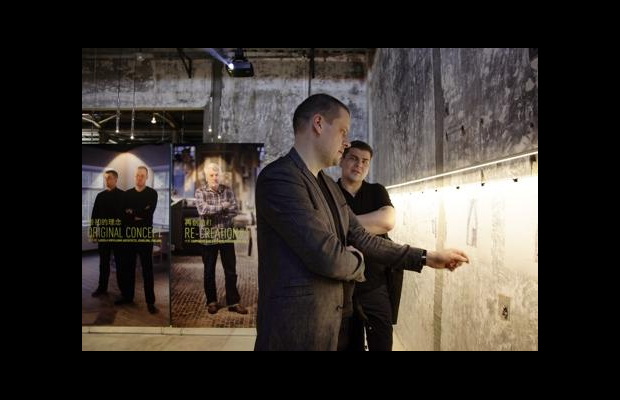The evolution of Helsinki city during the past 200 years is exhibited as part of UABB Bi-City Biennale of Urbanism\Architecture Shenzhen in China, on 5 December 2015 – 4 March 2016.

Can we reinvent our cities by creatively rethinking the existing urban fabric?
The sixth Shenzhen Bi-City Biennale of Urbanism Architecture invites us to take a fresh look at how we could revitalize our existing urban fabric. Its theme, Re-Living the City reminds us of the power of design to redefine the content and meaning of a ‘city’.
‘WAY – Seaway, Railway, Bikeway’ sheds light on the evolution of Helsinki’s urban fabric and culture, focusing on the axis between the West Harbour and Töölönlahti Bay. The two neighbourhoods are today connected by this Baana Bicycle Corridor, a pedestrian and bicycle thoroughfare that runs from the port to the city centre in a repurposed freight rail canyon.
The Baana Bicycle Corridor is the connecting thread that weaves together city districts and eras that have played a key role in Helsinki’s urban restructuring process. What ‘urban life’ ideally means to people has varied from era to era? The exhibition illustrates paradigm shifts in urban planning and ideology by focusing on three different ‘ways’: The seaway enabling the free flow of trade; the railway connecting the all-important port and central railway station; and the new bikeway that emblemizes today’s ‘shared city’ philosophy.
Architecture and urban planning have a direct formative influence on our lives by shaping the urban fabric around us. By tracing the history of the Töölönlahti–Jätkäsaari axis, we can follow Helsinki’s historical transformation from northern coastal town to industrialized community to the present moment and beyond, towards a future mapped by visionaries. The urban transformation process is at once local yet also linked to a broader international context.
The exhibition invites us to compare Helsinki’s historical evolution with that of Shenzhen, where a similar transformation is currently occurring, albeit at a much faster pace than in the Finnish capital.
Helsinki’s urban fabric tells the story of European modernism. Every city in the world is the product of its local conditions, whilst its urban fabric bears traces of broader social changes. Helsinki, like other cities, is a compendium of narratives about urbanization, industrialization and globalization – all of which are tangible and visible in Helsinki’s urban core.
Helsinki was founded in the 1500s to serve as a port of free trade. Its shoreline has undergone many changes since the late 1800s: Islands have been connected with the mainland, and bays have been filled. Today the city’s shoreline has a combined length of over 120 km. During past 200 years, the city of Helsinki has undergone big restructuring processes. The city centre has shifted from the Market Square and Senate Square to the vicinity of the main railway station, Töölönlahti Bay and onwards to Kamppi. Like many coastal towns, Helsinki is now freeing its prime waterfront property, previously occupied by industry, for the use of the townspeople.
This marks the second time the Museum of Finnish Architecture is participating in the Shenzhen biennale.
The exhibition was co-produced by the Museum of Finnish Architecture and the Architecture Information Centre of Finland, with Museum Director Juulia Kauste heading the curatorial team and expert input provided by Professor Panu Lehtovuori from the Tampere University of Technology and Jari Huhtaniemi, an architect from the Helsinki City Planning Department. The concept was designed by Tuomo Tammenpää and the exhibition realized by Juho Haavisto, an exhibition producer at the Museum of Finnish Architecture.
The exhibition was produced with support from the Ministry of Education and Culture.
Venue Dacheng Flour Factory, Shekou, Shenzhen, China
(metro: Shekou Port)
Source: Embassy of Finland, Beijing
